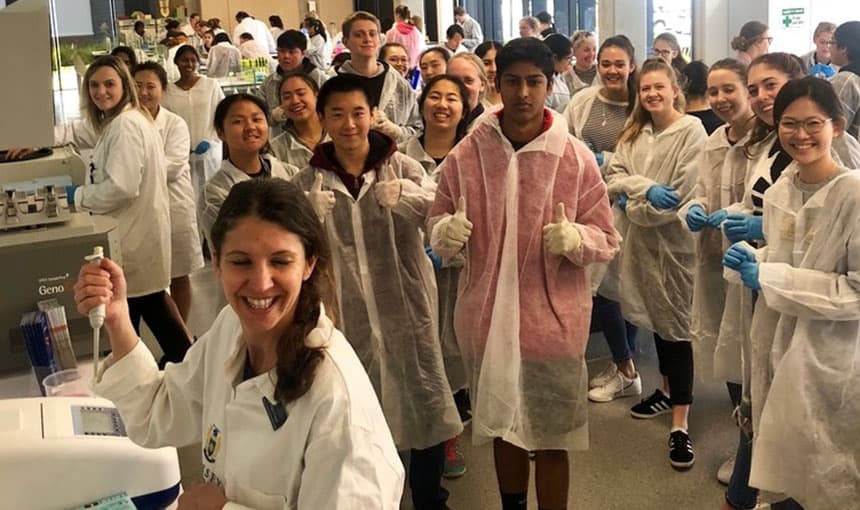The MinION is a hand-held DNA sequencing device that plugs into any computer and lets DNA analysis happen at the same time as the experiment.
Massey University’s Dr Nikki Freed purchased a MinION flow cell with the support of the BioHeritage Challenge, and says it allows her team to sequence much longer strands of DNA than what is currently available.
The technology has been commercially available for about three years and just a few other labs in New Zealand have one, she says.
“I think there are some exciting things we can investigate using this newish chemistry for DNA sequencing.”
- Creating reference-level, high-quality genomes (DNA sequences) is a valuable contribution to the goal of empowering New Zealanders so they value our biological heritage.
Nikki demonstrated the technology for more than 150 Year 11 and 12 students last year to give them a glimpse of what’s possible using the MinION.
Metagenomics Day was held across Aotearoa and gave high school students interested in biology the chance to get some hands-on experience in the lab.
Nikki helped the teenage scientists isolate environmental DNA (eDNA) from the hundreds to thousands of microbes that live in a few grams of soil, with the aim of using it to determine how healthy the soil was.
They used the MinION device to sequence the eDNA they isolated. The sequencing results began to appear in just a few minutes – enabling them to find out which species of microbes were present. If they had used traditional methods they would have had to send the eDNA to a special facility, where results would have taken several days, and usually weeks, to come back.
Nikki says that not only is the device easy to use, it also made the science more engaging for the students.
“I think the use of the Oxford Nanopore MinION device excited the students and gave them exposure to cutting-edge tools in molecular biology. It makes it a really useful microbiology outreach tool”.
Nikki says the MinION works well alongside slower, more accurate, traditional methods of DNA sequencing. Her team have already used it for a number of other projects, such as detecting what rats are eating in the wild.
